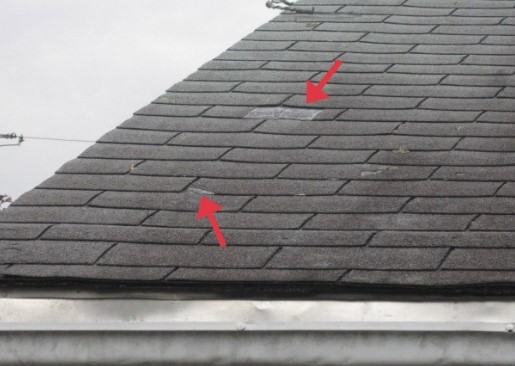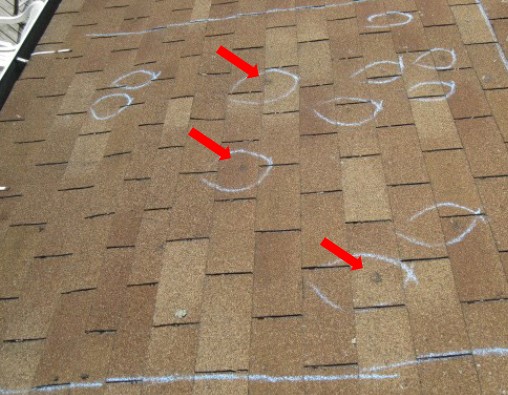The rain has stopped and the storm clouds have rolled away. Now it’s time to take steps to maintain your safety, check for damage from the severe rainstorm and get your property fixed so you can get back to life under sunny skies.
A severe rainstorm can cause anything from no damage to severe property damage. Fortunately, your homeowners insurance helps cover you for the damage caused by wind, lightning and hail. However, your home insurance doesn’t cover you for weather-related flooding, but your flood insurance does. If you didn’t have flood insurance, you can contact the Federal Emergency Management Agency (FEMA) for help.
Storms in the Forecast
A severe rainstorm is a storm with heavy rain, generally falling at a rate of .3 inches or more per hour. A thunderstorm, in addition to heavy rain, includes thunder and lightning and may bring hail and strong winds.
Every year, about 100,000 thunderstorms hit the United States and 10% of those are severe. In order to be classified as severe, a thunderstorm must be accompanied by at least one of these:
- Hail one inch or larger
- Winds 57.5 miles per hour or faster
- A tornado
These all pose a danger to you, your home and your car. This is especially important to consider if you live in the part of the country most at risk for storms, which extends from Southern Minnesota to Texas. However, a severe thunderstorm can hit anywhere.
After a severe rainstorm, you might be tempted to rush outside to take stock of broken tree limbs, displaced shingles and shattered glass. But it’s important to remember to take your time and be careful when assessing damage to your property in the aftermath of a storm.
Remain in a Safe Space After the Severe Rainstorm
Stay in your home, or in your car if you’re driving when the storm strikes. Don’t leave until you’re absolutely sure it’s safe to go outside. A simple lightning safety rule: If you can hear thunder, do not go outside. Lightning can strike 10 miles away from the center of a storm, even in an area where no rain is falling. In fact, many people get struck by lightning after the storm has passed because they mistakenly believe they are out of danger. To be safe, stay inside for 30 minutes after the final thunderclap.
And as long as you can hear thunder, avoid using corded phones, stay away from electrical wiring and don’t take a bath or shower or wash dishes. Pipes can carry electricity and it is possible to get struck by lightning inside your home.
Check for Immediate Dangers
Once it’s safe to head outside, survey your property for any problems that might pose an immediate safety risk to you, your family and your neighbors. Common post-storm dangers include downed power lines and hanging or broken tree branches.
If you notice that power lines have been knocked down, stay far away and immediately call your local electricity provider to report the situation. If you have access to the internet, you should be able to find their emergency number on their website. Don’t walk next to live wires because a downed power line can “energize” the ground up to 35 feet away, according to the Electrical Safety Foundation International.
If you notice tree branches are broken or hanging, stay away from them. You’ll also want to keep kids and pets away. Call a professional to remove any damaged limbs.
Learn more at The Hartford’s Catastrophe Information Center.
Assess the Damage From the Storm
If there are no immediate dangers in your vicinity, look for storm damage to your car, truck, van or SUV. A lightning strike to a car parked outside could cause burning or pitting on the exterior and burns on the interior. Lightning has also been reported to cause tire damage and problems with wiring and electronic systems.
Hail, which falls during the middle part of a thunderstorm, can cause vehicle damage. It’s not always easy to spot hail damage, so look carefully for:
- Chipped paint and dents on the exterior
- Broken, cracked or pitted glass
Also check for storm damage to your home. Here’s what to look for:
Roof Damage
Severe winds can damage your roof, leaving your home vulnerable to water damage. Survey your roof for missing shingles, holes, or crushed roof vents, which can prevent proper air circulation. Check the ground for any shingles that could have fallen as well. Call in a roofing professional if you notice any damage or if there are parts of the roof you can’t safely inspect on your own.
Wind Damage: What to Look For

Wind damage may consist of missing tabs, creased tabs and partially torn tabs.
Hail Damage: What to Look For

When hail damages a shingle, the granules are crushed by the hail stone resulting in bruises or punctures to the shingle pad.

Siding Damage
Inspect your siding for hail and wind damage. Hail can cause dents in siding and severe winds can rip pieces of it off a home. Look for damage to gutters and trim as well.
Window and Skylight Damage
Examine windows and skylights to see if they’ve been chipped, cracked or pitted by hail. Skylights can be especially vulnerable to hail damage, so look inside your home around skylights for any sign of cracks or water leaks.
Other Property Damage
Check air conditioning units and other outdoor appliances. Also look over other structures, such as a storage shed or gazebo for any damage caused by hail, lightning or wind.
If you can, make temporary fixes to prevent further damage to your property, especially wherever you find water leakage. For example, have a waterproof tarp installed over any holes in your roof to prevent water leaks that can damage your home’s interior and your possessions.
Take photos and detailed notes as you make your inspection so you’re prepared to talk to your insurer about what happened and how your property was damaged. If you have insurance from The Hartford, go to our online insurance claims center. We’ll contact you within one business day of reporting your claim to discuss next steps and get you back to living your life in better weather.







Thank you. Good reminders to keep on hand.
Living in Florida, this information is very important to all of us. With all the storms we get in the summer accompanied by thunder and lightening, one can never be too careful. It is so easy to mindlessly go outside right after a storm. Even if there isn’t any rain but there is thunder and lightening, so many people are outside. Folks haven gotten hit by lightening walking and riding bikes miles away from a storm, even when it’s not raining where they are. Thank you for this great information, such a wonderful reminder to be careful.
Thank you !! you learn something everyday.
Thank you
This is invaluable information! Thank you for sending.
Thanks for the update. Very helpful .
Thanks for the info from https://www.thehartford.com/resources/catastrophe-claims-operation
Thanks for your timely and very helpful article. I always read the emails you send and the advice and information are excellent help sources. Don’t stop!!
Glad to hear it, Peggy! Thanks for reading Extra Mile.
Important information, clearly explained. Thank you.
This was very helpful. Thank you.
Thank you for sharing this important information. As you say, a storm isn’t always over when it appears to be over!
Thanks for the review!
The comments were helpful in this article. Thanks.
Thank you for the valuable information. God bless you. Jeanette
I appreciate the information you send out to us policy holders.
Thank you.
This information is very helpful. Keep informing us what we need to look for after a storm
Thanks for the storm safety information.
Keep the good work up .
I’m so grateful for the different emails you send. I always read them. I find them very informative.
Great to hear, Ruth! Thanks for reading.
Thank you !!
Thank you. This was very good info and reminders.